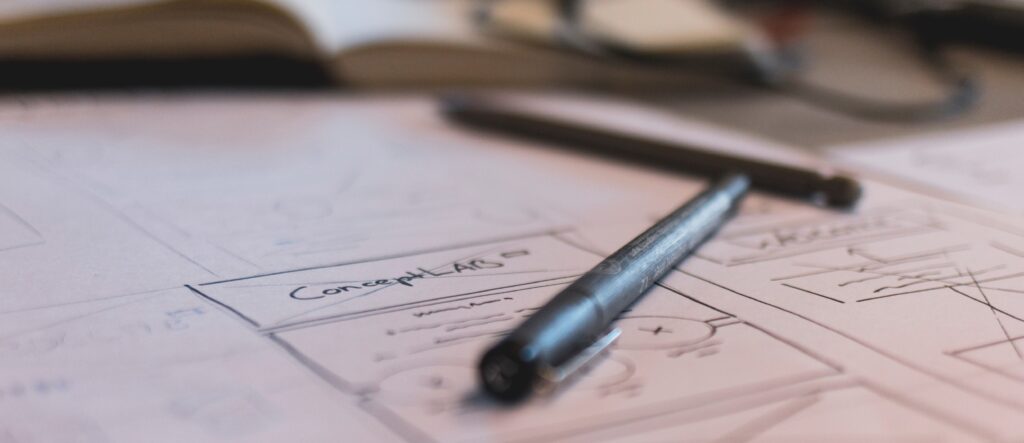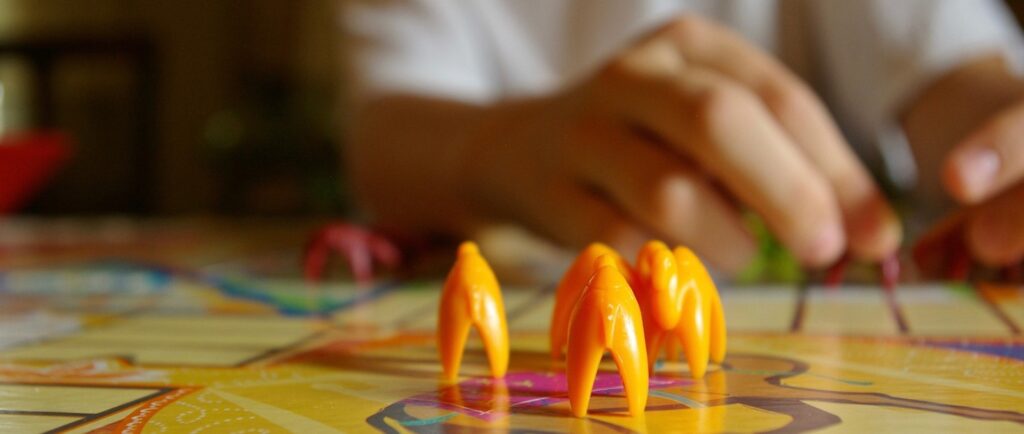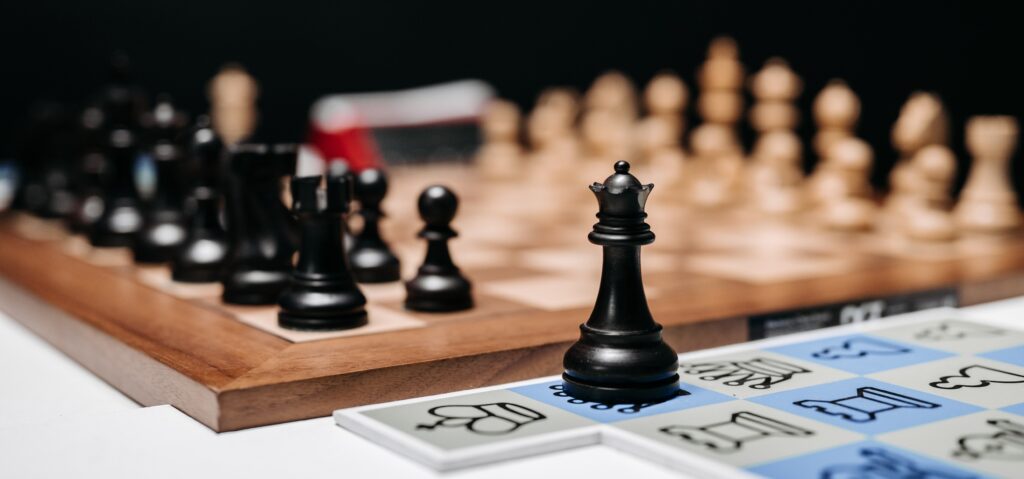Have you ever played a boardgame and thought you could design a better one? Creating a boardgame is an experience that will definitely put your creativity to the test.
If you are thinking of creating your own boardgame and don’t know where to start, here are some tips that will ayudarán a crear el prototipo de tu propio juego de mesa::
1. Define the concept and objectives of your boardgame
El first step in creating a boardgame prototype es definir tu idea. ¿Qué quieres que sea tu juego? La forma más fácil de hacerlo es respondiendo algunas preguntas básicas:
- ¿Qué tipo de juego de mesa te gustaría diseñar?
- ¿Cuál sera su temática?
- ¿Cuál será su público objetivo?
- ¿Cuántos jugadores participarán?
- ¿Cómo interactúan los jugadores?
- ¿Cuál es el objetivo del juego?
- ¿Cuánto tiempo durará?
Have a clear concept so that you have a good idea of where you want to go. Game design involves a lot of back and forth so you can always tweak and change things until you are happy.
2. Design the rules and mechanics

It is important to keep in mind that consistency is key, rules should be easy for players to understand and follow. Avoid including contradictory rules that may confuse players.
💡 Agregar ejemplos puede ser de gran ayuda.
Things you can do:
- Interaction with the players is very important as it will help define whether the game is only competitive or requires cooperation between players.
- Create a prototype. Use simple materials such as cardboard, paper and pencils to make a basic version of your game.
- Tabletop Creator also allows you to do this virtually as it is compatible with Tabletop Simulator.
- Once you have your prototype test it by playing it with friends or family.
- Test it multiple times to see how it works and to get feedback so that you can make improvements based on their suggestions.
3. Make adjustments and improve the rules
As you play with the prototype, you may notice that some rules don’t work well or that there are some mechanics that need to be adjusted.
Have in mind:
- Refine the rules to improve gameplay.
- Remember a key factor when it comes to game design is that the rules should be clear and easy to understand.
- ¿Is the game balanced?
- If a feature is too powerful or too weak, it can unbalance the game and make it less fun for the players.
- Repeat this process until you are satisfied with the game.
- Tabletop creator offers you the opportunity to easily preview your boardgame prototype so you can play test as you go.
4. Design the board and pieces
Una vez que tengas las reglas básicas y el prototipo del juego, es hora de diseñar el tablero y las piezas. Si bien cualquiera puede encontrar imágenes a través de un sitio web de imágenes de stock, te recomendamos que uses un software de diseño como Photoshop, Illustrator to make your designs unique.
A specialized software such as Tabletop Creator can help you optimize and speed up the design of your boardgame prototype and easily preview how everything will look when put together.
Remember:
- The game mechanics are vital, but the presentation is the aspect of the game that will attract attention first.
- It’s important that the main elements are well designed and visually appealing.
- Make sure the pieces are easily distinguishable from each other.
- If two pieces look similar, they can cause confusion among players and negatively affect the game experience.
- The materials you choose matter.
- The pieces can be made of different materials such as paper or plastic, or have different shapes, depending on the type of game you are creating.
- Don’t over complicate things (unless you want to); paper tokens or even plastic figures are options which could easily fit the theme of the game and reduce production costs.
5. Produce el juego

Finally, if you decide to launch the game, you will need to produce a large quantity to sell or distribute. You can do this through printers or manufacturers specializing in boardgames.
Remember:
- Production and distribution involves not only manufacturing the product itself, but also implementing an effective marketing strategy and efficient distribution logistics.
- It’s important to consider how you will decide to market the launch of your project, promote the game and achieve a greater market reach.
- You can use broadcasting channels such as social networks, organize events and tournaments so that people can try it out and meet it in person.
Si necesitas financiamiento para su producción, puedes lanzarlo en plataformas de crowdfunding como Kickstarter.
Types of Boardgames

You don’t need to start from scratch. The best way to get inspired is to look at your main competitors or at your favorite games. Here you can find a list of the main types of boardgame and a short explanation of what they entail.
🧠Abstract Games
Abstract games are games that are not themed and rely on pure strategy and logic. They are often characterized by simple rules and a high level of complexity. Some popular abstract games include Chess, Go, and Checkers.
🗺️Eurogames
Eurogames are a type of boardgame that originated in Europe. They are typically characterized by their focus on mechanics and strategy, rather than theme. Eurogames often have simple rules and a focus on player interaction. Some popular Eurogames include Carcassonne, Ticket to Ride, and Settlers of Catan.
📖Thematic Games
Thematic games are games that are heavily themed and often have a story or setting. They often have more complex rules than abstract games, but they can be more immersive and engaging. Some popular thematic games include Pandemic, Betrayal at the House on the Hill, and Gloomhaven.
🎉Party Games
Party games are games that are designed to be played with a large group of people. They are often quick and easy to learn, and they are not typically very strategic. Some popular party games include Codenames, Telestrations, and The Resistance.
🔎Deduction Games
Deduction games are games where players try to figure out who or what is hidden from them. They often involve bluffing and deception. Some popular deduction games include Clue, Secret Hitler, and The Resistance.
🪖Wargames
Wargames are games that simulate military conflict. They often have complex rules and require a lot of strategic thinking. Some popular wargames include Risk, Axis & Allies, and Diplomacy.
Conclusión
Creating a boardgame can be a fun and exciting experience. Although the process can be long and requires a lot of dedication and patience, the results can be very rewarding. By following the essential steps we have outlined, you can design your own unique and original boardgame, and share it with others to enjoy.
💡 Recuerda que un buen título puede atraer a los jugadores y hacer que quieran probar el juego, al igual que una buena tipografía que lo haga distinguirse del resto.💡
¿Do any of these types of boardgames inspire you? ¡Look around! There is a vast amount of types of boardgames in the market, these are just the main ones. Or you could always create your own category, the sky is the limit.


